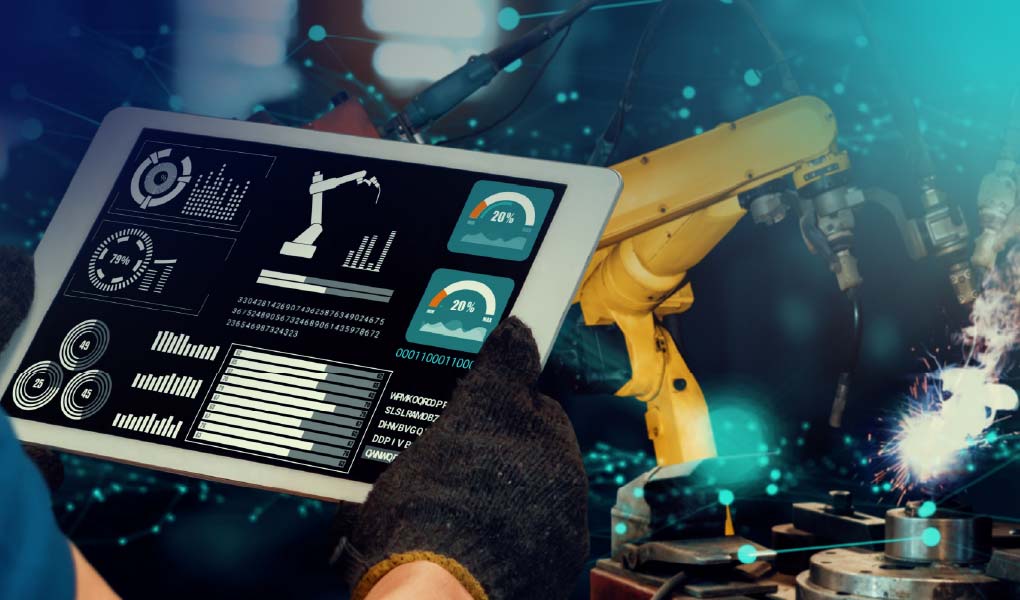
Table of Contents
- Introduction
- What is Predictive Maintenance?
- Types of Predictive Maintenance
- Advantages of Predictive Maintenance
- Applications in Different Industries
- Key Technologies Behind Predictive Maintenance
- Current Trends in Predictive Maintenance
- Future Outlook
- Conclusion
Introduction
Unplanned equipment failures are costly, disruptive, and can even be dangerous. In the past, industries relied on reactive or preventive maintenance strategies to manage machine health. However, these methods were inefficient and often led to unnecessary maintenance or unexpected breakdowns. Enter Predictive Maintenance (PdM) —a game-changing strategy powered by AI, IoT, and big data analytics. Predictive maintenance uses data from sensors, historical patterns, and machine learning algorithms to foresee equipment issues before they become problems. This article explores the concept in depth, its applications across various sectors, and why it’s becoming a foundational strategy in Industry 4.0.
What is Predictive Maintenance?
Predictive Maintenance is a technique that predicts when an equipment failure might occur so that maintenance can be performed just in time—before the failure happens. This strategy hinges on monitoring asset conditions in real-time through sensors and applying advanced data analytics to detect early signs of degradation. For instance, in a power plant, predictive maintenance systems can alert engineers to abnormal vibration in turbines, enabling them to perform targeted repairs instead of replacing the entire unit. It optimizes operational efficiency, reduces maintenance costs, and most importantly—minimizes unexpected downtime.

Types of Predictive Maintenance
-
Condition-Based Monitoring: This involves continuous or periodic monitoring of parameters such as temperature, vibration, sound, and pressure. For example, monitoring the temperature of a motor bearing helps detect overheating before the motor fails.
-
Statistical Process Control (SPC): SPC relies on analyzing process-related variables statistically. Any deviation from normal operating parameters—like pressure or output consistency—triggers alerts. It’s especially useful in chemical and food processing industries.
- Prognostics and Health Management (PHM): PHM estimates the Remaining Useful Life (RUL) of assets. Using historical failure data and machine learning, this type provides a timeline for potential failure, giving maintenance teams ample time to respond.
- Remote
Monitoring:
Equipment in inaccessible locations—like oil rigs or solar farms—is often monitored remotely. Data is transmitted via IoT to cloud platforms where AI algorithms analyze the health of the machinery in real time.
Advantages of Predictive Maintenance
-
Reduced
Downtime: Predictive maintenance ensures continuous equipment monitoring through sensors and data analytics. By identifying potential failures before they occur, companies can perform maintenance at the optimal time — avoiding surprise breakdowns and reducing machine downtime by up to 50%. This leads to better production continuity and fewer losses from idle equipment.
-
Cost
Savings: Traditional maintenance schedules often lead to unnecessary part replacements and labor costs. With predictive maintenance, interventions are performed only when needed, which saves time, spare parts, and human resources. For instance, in aircraft predictive maintenance, components are replaced only when wear is detected, reducing aircraft grounding time and expensive part swaps.
- Increased
Equipment Life: Early detection of wear, misalignment, or stress prevents long-term damage. This proactive intervention slows down equipment degradation, allowing industries to maximize asset usage. A compressor that would otherwise fail due to overlooked vibration issues can be saved by PdM, adding years to its operational life.
- Enhanced
Safety:
Faults that go unnoticed may lead to dangerous incidents, especially in sectors like aerospace, oil & gas, and energy. Predictive maintenance helps detect critical anomalies (like overheating, voltage spikes, or fluid leakage) that could pose safety risks. Timely alerts ensure that maintenance crews act before situations escalate.
- Improved
Resource Planning:
Predictive systems provide data-driven forecasts about maintenance schedules, parts requirements, and personnel needs. This helps in smarter inventory management (ordering parts just-in-time) and workforce planning (assigning technicians efficiently), improving the overall operational ecosystem.

Predictive Maintenance In Industries
-
Manufacturing: In the manufacturing sector, predictive maintenance is widely adopted in monitoring CNC machines, conveyors, motors, and robotic arms. For example, AI algorithms can detect subtle vibration changes in a motor, indicating an impending bearing failure. Fixing it proactively avoids halting an entire production line.
-
Automotive: Automotive manufacturers use PdM to monitor assembly line equipment and vehicle parts. Real-time data from IoT sensors helps track wear and tear in robotic welders, ensuring consistent build quality and reducing recall risks. Additionally, car manufacturers now embed PdM capabilities in connected cars to alert drivers about potential component failures.
-
Aerospace: Aircraft engines and systems are critical and expensive. Predictive maintenance systems here monitor hundreds of data points—from fuel pumps to turbine blades. Aircraft predictive maintenance allows operators to schedule maintenance activities during planned downtimes, reducing Aircraft on Ground (AOG) incidents. This not only enhances safety but also increases fleet availability.
- Energy &
Utilities:
In power generation and distribution, PdM is used to monitor transformers, turbines, and circuit breakers. For example, sensors track transformer oil quality or gas emissions. This helps in detecting insulation degradation early, avoiding blackouts and grid failures.
- Oil &
Gas:
This sector involves remote and hazardous environments. PdM monitors pressure vessels, drilling equipment, and pipelines. AI-powered inspection drones are now used to detect corrosion and cracks in offshore rigs, ensuring safety and operational continuity.
Key Technologies Behind Predictive
Maintenance
-
IoT
Sensors:
Internet of Things (IoT) devices are the backbone of PdM. These sensors collect real-time data on temperature, vibration, pressure, noise, and more. Their widespread deployment enables continuous monitoring of asset health.
-
AI and
Machine Learning: Machine learning models analyze sensor data to detect abnormal patterns or deviations. These models are trained on historical maintenance records and real-time operational data. In aircraft predictive maintenance, for instance, AI systems can predict turbine wear or hydraulic leaks based on flight history and operational parameters.
- Big Data
Analytics:
Predictive maintenance systems generate enormous volumes of data. Big data tools process this information to identify trends, correlations, and failure patterns. This helps organizations make data-driven maintenance decisions across their operations
- Edge Computing: Instead of sending all data to the cloud, edge computing allows processing at the source—right where the data is generated. This enables real-time alerts and reduces latency, which is critical for fast-paced industries like aerospace or automotive.
Current Trends in Predictive Maintenance
- AI-Powered Decision Making: AI is now integrated with CMMS (Computerized Maintenance Management Systems) to automate maintenance workflows.
- Digital
Twins: Simulate real-time operations and stress scenarios.
-
Blockchain for Maintenance Records: Blockchain ensures transparent and tamper-proof maintenance logs, crucial in regulated industries like aerospace.
- Mobile PdM Apps: Maintenance teams now use mobile apps for real-time access to equipment health, service history, and troubleshooting guides.
Future Outlook
Predictive maintenance is evolving rapidly. With advancements in AI, 5G connectivity, and edge computing, PdM systems will become more autonomous and cost-efficient. In the next few years, we can expect:
- Wider adoption in small and medium enterprises
- Integration with sustainability metrics (like energy consumption)
- Enhanced interoperability between PdM and ERP/SCADA systems
- Rise of self-healing machines with RPA
Conclusion
Predictive maintenance is no longer a futuristic concept—it’s a present-day necessity. By shifting from reactive to proactive strategies, industries can achieve higher uptime, better safety, and lower costs. With the integration of AI, IoT, and big data, PdM is set to revolutionize industrial asset management across the globe.
As the industry moves toward zero unplanned downtime, predictive maintenance stands at the center of operational excellence and intelligent automation.

Want to Know More? Schedule a Demo Call.